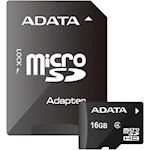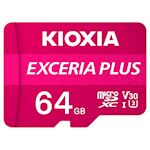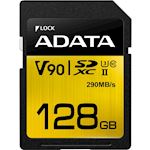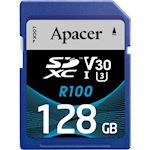Memory Cards
Frequently asked questions
-
Why is the actual storage capacity of the Memory Card slightly less that the product specification?
All storage products will display a lower than stated memory capacity. The reason is the general used method for calculation of megabyte used by manufacturers:
The calculation for a 32GB is done like this:
32GB=32.000.000.000 Bytes, 1024Byte = 1KB
32.000.000.000/1024= 30.250.000KB, 1024KB=1MB
31.250.000.000/1024= 30.517,58MB, 1024MB=1GB
30.517,58/1024= 29,8GB
Therefore a 32GB Flash Disk will show 29,8GB under Windows.
-
What is SD 2.0 (SDHC)?
SDHC (Secure Digital High Capacity, SD 2.0) is an extension of the SD standard which increases card's storage capacity up to 32 GB. SDHC cards share the same physical and electrical form factor as the older SD cards, allowing SDHC-devices to support both newer SDHC cards and older SD-cards. To increase addressable storage, SDHC uses sector addressing instead of byte addressing in the previous SD standard. The SD 2.0 standard limits the maximum capacity of an SDHC card to 32 GB. SDHC cards will not work in devices designed to the older SD 1.x specification. The SDHC trademark is licensed to ensure compatibility.
-
What is SDXC?
The Secure Digital Extended Capacity (SDXC) format was unveiled at CES 2009. The maximum capacity defined for SDXC cards is 2 TB (2048 GB). The older SDHC cards also have a maximum capacity of 2 TB based on the card data structures, but this is artificially limited to 32 GB by the SD 2.0 specification. The first SDXC being released are governed by an SD 3.0 specification (which also still specifies FAT32 format and thus lower capacities), whereas higher capacity and faster SDXC are expected to follow an SD 4.0 specification, which is due to be released in the spring of 2010.
-
What is the SDHC class rating?
The speed class rating is the official unit of speed measurement for SDHC cards, which were defined by the SD Association. It is equal to 8 Mbit/s, and it measures the minimum write speeds based on the best fragmented state where no memory unit is occupied.
The following are the ratings of some currently available cards:
- Class 2: 16 Mbit/s (2 MB/s)
- Class 4: 32 Mbit/s (4 MB/s)
- Class 6: 48 Mbit/s (6 MB/s)
- Class 10: 80 Mbit/s (10 MB/s)
Pretec provide the highest speed SDHC 233x pro class 16 card. It's read/write performance up to 35/20 MB/s.
-
What does the speed of CF cards mean?
In Pretec CF card product definitions, 1x represent the performance of 150KBytes/sec. Take the 433x CF card as an example, the performance is 65MB/s (433 x 150KBytes/sec=65MBytes/sec).
All data transfer statistics provided is for your reference only. The actual speed of data transfer speed will depend on different system specifications, settings and performance.
-
What are the differences between CF type I, CF type II and CF I/O cards?
There are three subdivisions of CF cards, Type I cards, the thicker Type II cards and the I/O cards.
CF Type I
At 43mm (1.7") x 36mm (1.4") x 3.3mm (0.13"), the CF Type I card's is less than one-half of a current PCMCIA Type II card. Compared to a 68-pin PCMCIA card, a CF card has 50 pins but still conforms to ATA specs.
CF Type II
At 43mm (1.7") x 36mm (1.4") x 5.5mm (0.19"), the CF Type II card's is equal to that of a current PCMCIA Type II card. Compared to a 68-pin PCMCIA card, a CF card has 50 pins but still conforms to ATA specs.
TeqFind's Choice:
-
 16GB MicroSDHC Card Class 4 w/adapter€ 4.58 excl. VAT
16GB MicroSDHC Card Class 4 w/adapter€ 4.58 excl. VAT
€ 5.54 incl. VAT -
 64GB Kioxia Exceria Plus MicroSDHC UHS-I U3€ 20.33 excl. VAT
64GB Kioxia Exceria Plus MicroSDHC UHS-I U3€ 20.33 excl. VAT
€ 24.60 incl. VAT -
 Adata Premier ONE V90 128GB€ 92.44 excl. VAT
Adata Premier ONE V90 128GB€ 92.44 excl. VAT
€ 111.85 incl. VAT -
 Apacer SDXC UHS-I U3 V30 R100 128GB RP€ 22.12 excl. VAT
Apacer SDXC UHS-I U3 V30 R100 128GB RP€ 22.12 excl. VAT
€ 26.77 incl. VAT
